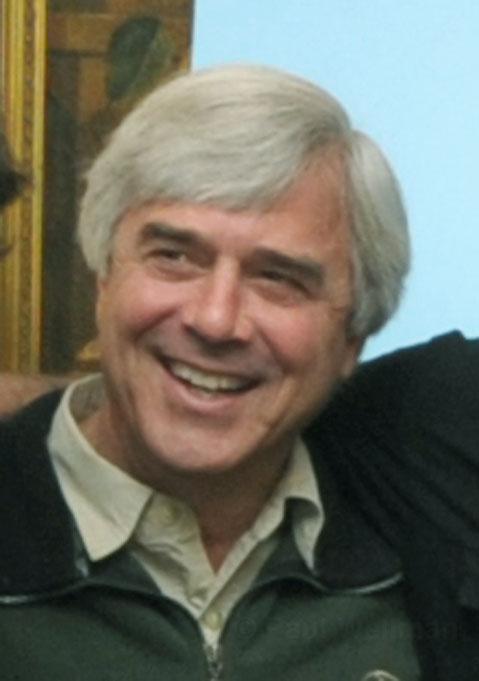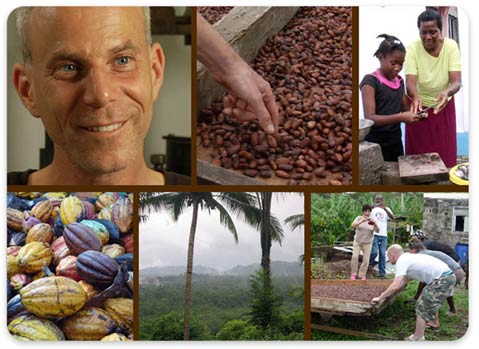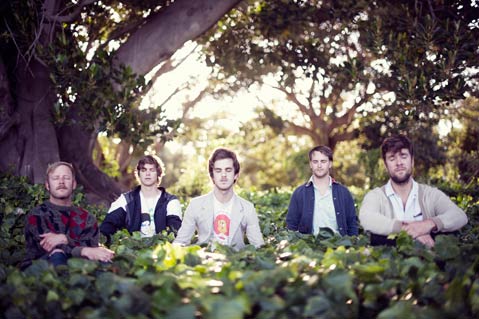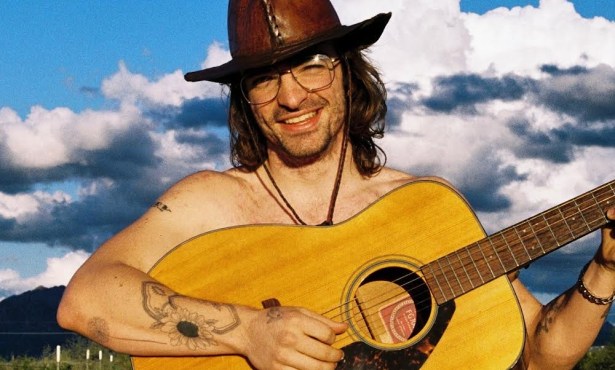Paying Respects to an SBIFF Titan
Remembering Mike DeGruy; Plus, Nothing Like Chocolate and More
On Saturday morning, the shocking and saddening news came like an invisible wave over the SBIFF zone: longtime nature film programmer and filmmaker in his own right Mike DeGruy had died in a helicopter accident the night before. That he died while working on a film, in Australia, was some consolation, and as Roger Durling and other festival film introducers reported, almost like a mantra, DeGruy would have wanted the show to go on. But the ironic timing of his tragic passing, on weekend two of the festival he had a strong role in for a decade, and the great loss for friends and family created an aura of mourning and also appreciation for his considerable contributions to this festival. He was an integral part of the village that it takes to raise SBIFF, and make it the potent cultural force that it is.

Mixing the bitter with the sweet, the factual and the idealistic, the documentary Nothing like Chocolate gives a macro and micro perspective on the beloved sweet stuff. Smartly directed by UCSB Sociology professor Kum-Kum Bhavnani, the film fleshes out the opening line supplied by one Susan Sarandon: “Who doesn’t love chocolate? But there’s more to this decadent product than we know.” Actually, news has been spreading, if not fast or wide enough, about the inhumane child slave labor deployed in key West African cocoa-growing regions, especially the Ivory Coast. Activists and compassionate choco-holics have called for measures to address the tragic pattern of abusive labor, including boycotting corporate chocolatiers like Hershey and Mars (neither of which chose to be interviewed for this film, not surprisingly).

Bhavnani does due diligence in giving some background and overview of the chocolate industry and history. But she has wisely chosen to personalize her tale and give it a face by focusing on one particular “ethical chocolate” company, the Grenada Chocolate Factory, run by the charismatic NYC émigré Mott Green, a self-described “political activist version of Willie Wonka.” Green’s factory emphasizes paying fair wages to cacao growers on the island, and overseeing closely-watched system of “bean to bar” chocolate bar production, on an “artisanal” basis.
For another Santa Barbarian angle, Bhavnani interviews Maya Schoop-Rutten, the discerning Swiss-born proprietor of the Chocolate Maya specialty shop (down by Santa Barbara Roasting Company), one local outlet for Grenada Chocolate Factory. Food guru Michael Pollan also supplies insights, as when he points out that in the chocolate world, like many food commodities, “unfair trade is the norm.” Make no mistake: while one thread in Bhavnani’s fine doc has to do with the avid pursuit and celebration of chocolate bliss, its advocacy underpinning with striving toward a world of chocolate made with “slave-free beans.”
DIRECTOR’S ODDNESS: There was an awkward yet telling moment in the Directors’ Panel at the Lobero on Saturday, when a director and two actors hijacked their moment at the microphone during the audience Q & A portion of the program. Blatantly attempting to pitch their services to and curry some kind of favor with this stage full of Hollywood-kissed directors, they were roundly booed and shooed by the crowd and moderator Peter Bart, who finally said, “Guys, we’re rooting for you, now sit down.” The director did not go quietly into the good day, bellowing “closed mouths don’t get fed.” True enough, and the history of Hollywood is rife with tales of future members of the Academy who started out with some brazen and pushy scheme to get a script read or an audition nailed. Somehow, the Lobero stunt didn’t seem destined for that file, but we could be wrong. But it did provide a tingly spontaneous X factor to the event.
It may be a significant indicator of the strange times in Hollywood that the six directors on this particular panel were representing animation and/or comedy (Rango, Bridesmaids, Kung Fu Panda 3D, Puss in Boots), and/or a conceptual anomaly (The Artist), with the odd man out being Terry George, in town to promote his Oscar-nominated short, The Shore. Ironically or not, he was probably the funniest character onstage. As for another distinguishing point, the Irish director noted, “I have the distinction of having a film that nobody has seen. I can say, ‘It’s amazing!’”
As for his tendency to switch genres from film to film, Rango’s Gore Verbinski admitted “I like the unknown. I feel like every movie is my last movie, and I’ll never work in this town again. So I have to learn and grow and be happy with what I do.”
George had one of the last words, in responding to a question about seeing one’s finished product after the pain and struggle of getting it to the finished product stage. He opined that once it’s finished, it’s dead. “Glorified corpses is what we put out, and a lot of them stink.”
GARDENS & VILLA’s FAUST: In a film year, and a SBIFF program, where the remote past is given due reverence, courtesy of the pre-talkie era cinematic world paid homage in Hugo and The Artist, it made good poetic sense that one of this festival’s unique twists was a live rock band accompaniment to a silent classic, being German master F.W. Murnau’s artistically-charged 1926 melodrama Faust. Doing the live accompaniment honors, Saturday night at the Lobero, was Santa Barbara’s own claim to indie rocking fame, Gardens & Villa.

With the band cleaved in two parts, flanking the screen onstage, the sonic fabric often went retro in a beautiful way, with Tangerine Dream-y drum machine-driven grooves, textural washes and occasional synched accents to lock in with onscreen action. The band’s retro-techno element complemented Murnau’s own then-innovative visual FX and timeless visual expressiveness. Later in the film, the music turned tender and major chord-y for the soon-to-be doomed love scene, and chaotically Sonic Youth-y for the sword fight which leads to the Faustian pact implosion we know is coming. All in all, G&V achieved a fresh, small wonder with their contribution to the by-now rich tradition of live scores to films of the silent age.
Interesting film history/local factoid: Murnau died in an auto accident in 1931, five years after he made Faust, on Highway 1 in our fair town. For further film history/local factoid fun, head straight to the fascinating Flying A exhibition at the Santa Barbara History Museum. For one, the tale of Audrey Munson (who posed nude in Mission Canyon and died at 105 in a mental institution) is sure to incite curiosity and vintage eros.



